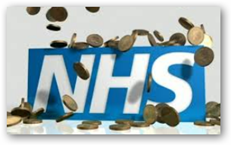The article states the declined began in April, right around the time that the new leader of the NHS took over, which is a former United Healthcare Executive from the US, originally from the UK. Of course we can’t blame all the issues on the new leader, but if the NHS begins to experience a lot of what his former employer had done here, well they are in for a rocky with with Quantitated Justifications with stats and numbers for things that are not true with money and budgets.
but if the NHS begins to experience a lot of what his former employer had done here, well they are in for a rocky with with Quantitated Justifications with stats and numbers for things that are not true with money and budgets.
United Healthcare Executive to Leave the US and Run the NHS in England-Big Data Math Models and Algorithmic Business Intelligence Formulas On the Move…All About Money…
Just a few months ago in the city of London, now known for housing more billionaires than any other city three NHS hospitals went bankrupt, so I ask is there something wrong with this picture? It’s the same thing we see in the US with around one hospital a week that seems to be closing somewhere in the US, however, CMS seems obvious to this part of the problem with healthcare.
Three NHS Hospitals Declared Bankrupt, Board Suspended and Placed Under Special Administrator in the London Area
The NHS flat out seems to need more money to operate or start cutting services, so what will it be? They had to cut budgets and maybe their problem is just like we have in the US with too many folks that can’t tell the difference between virtual and real world values. As I always say, doctors deal with the real world, not virtual and the name for that is: Patients.
In addition the NHS had their data selling issues to deal with too, the epidemic in the US and maybe it’s over there as well. Anytime any corporation has data in hand, it’s cash burning a hole in the corporate pockets anymore.
NHS Patient Data Used By Marketing Consultant to Advise Clients On Where To Target Facebook and Other Social Media Ads, And Let’s Not Forget the Barclay’s Breach While We Are At It, Medical Information Used and Sold As “Data Selling Epidemic” Continues to Grow
So far 66 NHS trusts are in the red. BD
For McNeil, negotiating a financial squeeze unprecedented in the NHS’s 66-year history has meant, for example, having to extend the expected life of some of Addenbrooke’s scanners, which identify cancer and other serious diseases. One of the £500,000 CT scanners is being replaced but an older one – which is used particularly for brain scans – is being kept in service.
But contributing to the quest for efficiencies is only part of the picture. Much like the NHS in recent years, the hospital has been facing a financial double whammy. It has been confronted by sharply rising costs at the same time that it has had to make millions of pounds of savings.
The spectre of the Mid Staffs scandal, in which understaffing led to notoriously poor care of patients, looms large. A serious shortage of experienced nurses in some of Addenbrooke’s key departments – cancer, neurosurgery, intensive care – has seen its annual spend on agency nurses jump 50% from £1.24m in 2013-14 to a projected £1.82m this year.
There were 66 NHS trusts that ended 2013-14 in the red – incurring overspends of more than £750m – up from 45 a year earlier. They include 41 of the 147 foundation trusts, double the 21 seen a year earlier. Those are the trusts that, semi-independent of the DH and NHS, are meant to have the best-run finances. Surpluses generated by other hospitals almost balanced out that £750m, but not quite, leaving the sector to post its first deficit – totalling £107m – since 2005-06, the last time the service hit financial turbulence. That cost the then chief executive, Nigel Crisp, his job.
The service’s financial health went downhill fast in the first few months of the current NHS financial year, which began on 1 April. By the end of July, 98 NHS trust hospitals showed a deficit of £300m and were predicting it to rise to £563m by the end of March. For example, Leeds Teaching Hospitals NHS trust believes it will have a deficit of £49m, almost 5% of its turnover. The sector’s net deficit, £241m at the end of March, is likely to be twice that by the end of the year.
Politically, the NHS’s two-sided coin of financial health and performance – its ability to treat patients within set waiting times – matters hugely.
Worryingly for the main parties, both are deteriorating sharply. Targets to treat A&E patients within four hours and those on waiting lists for planned treatment within 18 weeks have been slipping. Even targets for treating cancer patients have been missed in the past six months.
An urgent debate is needed “on the choice between more money for the NHS or a lower level of care.” With an election looming, the second is unlikely to be an option.



0 comments :
Post a Comment